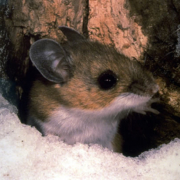The Alarm is Sounding for Nature. Who Will Take the Lead in Materiality, Mainstreaming and Action?
The Global Assessment Summary Report from the Intergovernmental Science-Policy Platform on Biodiversity and Ecosystem Services (IPBES) splashed across newspaper and social media channels earlier this month. For some it was a shocking and depressing addition to the many IPCC climate reports that have been dominating the environmental news for years. For others it was an amplification of what we already knew from IUCN’s Red List, WWF’s Living Planet reports and the Convention on Biological Diversity’s (CBD) acknowledgement that it would not meet its Aichi Targets in 2020.
For decades, polite warnings about the state of our natural world have been ignored or downplayed in the media and by policy makers. The IPBES Report does away with the politeness and instead communicates the situation starkly and clearly in headline-making statements like “one million species at risk of extinction,” and “between $235 billion and $577 billion in annual global crop output is at risk from pollinator decline.” The report definitively states how consumption and land use patterns have created a grave unraveling of the web of life that, if left to unspool over the next two decades, will result in a grayer, poorer and more uncertain future for nature and the human species that depend on it.
One of the reasons for the devastating loss of species is land use that causes habitat destruction. Over one-third of the terrestrial land surface now being used for cropping or animal husbandry is managed with industrial yet nature-destroying efficiency. Pollution has altered our oceans, affecting at least 267 species, including 86% of marine turtles, 44% of seabirds and 43% of marine mammals. Overexploitation of natural resources is a driver that has decimated populations of fish, shellfish and other marine species.
Invasive species, enabled by the global movement of goods and people, is another driver for species loss, leaving one-fifth of the earth’s surface at risk of plant or animal invasions that can destroy native systems and overwhelm endemic, rare or specially-adapted species. Climate change exacerbates the already weakened web, bleaching coral reefs impacted by pollution, shrinking or moving species’ ranges in habitats fragmented by development and causing species interactions to be desynchronized as the timing of spring emergences and migratory arrivals becomes increasingly altered in different directions.
All sectors—government, private and the public-at-large—are implicated in this crisis. Governments have instituted policies that make it easy to ignore impacts on nature, the private sector has taken full advantage of said policies, and the public at large embraces the throw-away life of single-use plastics, fast fashion and easy access to unseasonal foods. All sectors have to address their own institutions, policies and practices if we are to repair the damage to the web of life that supports us all.
Industry is especially indicted in most aspects of the IPBES report. While we recognize that industry has created the prosperity and health that much of the world’s population enjoys today, it has also caused the habitat destruction, pollution and unsustainable land use driving extinctions of once common plant and animal species.
Industry has a major role to play in reversing the trend.
While there are many potential policy proposals at the intersection of the public and private sectors where government regulations, subsidies, financing and fines can affect the systematic change we need, there are also a number of pragmatic solutions that require neither government carrots nor sticks, but enlightened leadership with the capacity to see beyond the bottom line and the strength to act.
Materiality
First, more companies need consider biodiversity as a risk or materiality. In a recent study, fewer than one-third of the top 100 companies in the global Fortune 500 published biodiversity commitments in their external reporting, with only five companies listing specific, measurable and time-bound targets.
Across sectors, the extractive industries have for many years adopted strong biodiversity commitments driven by lenders, stakeholders and shareholders because of the direct impact they have on the biosphere. For mining companies, the regulations that have governed their investments and operations for many decades have made biodiversity a material issue. It’s now time for all companies to consider biodiversity as a materiality.
Everything made today impacts biodiversity.
Whether a product is taken directly from the ground as metal or rock, grown in the earth as food or fiber, processed somewhere along the value chain as a plastic, a chemical or a piece of clothing, biodiversity is impacted. The energy used, the transportation routes taken by both land and sea, the surface parking lots at the big box stores, and the landfills that receive our spent products all impact nature in one way or another.
With a crisis of this magnitude, companies, regardless of their product, should examine the full range of their own operations and suppliers for impacts on nature. The Suppliers Partnership for the Environment, a U.S.-based initiative to help the auto industry “green” its supply chain, leads by example. It has working groups on the expected topics like battery disposal, materials efficiency and water management, but it has also convened a biodiversity working group that allows industry leaders like Toyota, Fiat Chrysler, General Motors, Honda and Ford to push biodiversity action to their suppliers, capturing biodiversity attributes along the chain of a product and thereby making biodiversity material.
Mainstreaming
Mainstreaming as a concept has many definitions, but it basically means that biodiversity is considered across an entire enterprise or life cycle. It could mean designing remediation remedies with a nature-first focus; planning maintenance of non-operational land with biodiversity (not budget) as a driver; or developing BMPs that promote ecological stewardship on rights-of-way, buffer lands, test tracks or landfills.
When biodiversity becomes material, it is easier to mainstream into operations. The CBD has sought biodiversity mainstreaming for many years, but not until its Conference of Parties (COP14) last year, was mainstreaming for the mining, energy, manufacturing, processing and infrastructure sectors discussed for the first time among the delegates. This is small progress. We need more.
Mainstreaming biodiversity would see corporate conservation opportunities considered in capital projects as part of the initial design phase rather than an afterthought. Given the diversity of corporate land holdings across the world, adopting a corporate-wide mainstreaming approach could make a significant difference to ecosystems of all sorts. We have to consider land as having multiple uses and manage it for both nature and business needs.
Action
Materiality and mainstreaming are approaches that will only get us so far. They create a mindset and a framework for action, which is the ultimate objective. The IPBES discusses biodiversity as “Nature’s Contribution to People,” defining the concept as the many cultural, social, spiritual and financial ways biodiversity is important to people around the planet. This contribution makes biodiversity a local issue with local ownership.
Constantly framing biodiversity within government policy or as an item on a corporate balance sheets creates a sense of it being someone else’s problem. Understanding the local value of nature is key to driving human-scale action. Connecting a corporate acceptance of biodiversity as a materiality with an operational mandate of mainstreaming to strong local action is a needed to halt biodiversity losses and restore nature.
This crisis presents a real opportunity for the private sector to take action. As Andrew Winston wrote in his piece about the IPBES report, “I’ve always believed in business and its abilities to tackle big issues. But we need bravery to challenge the status quo now. What an amazing opportunity for real leaders to step up.”
These real leaders must emerge soon—nature doesn’t have the time to wait.









